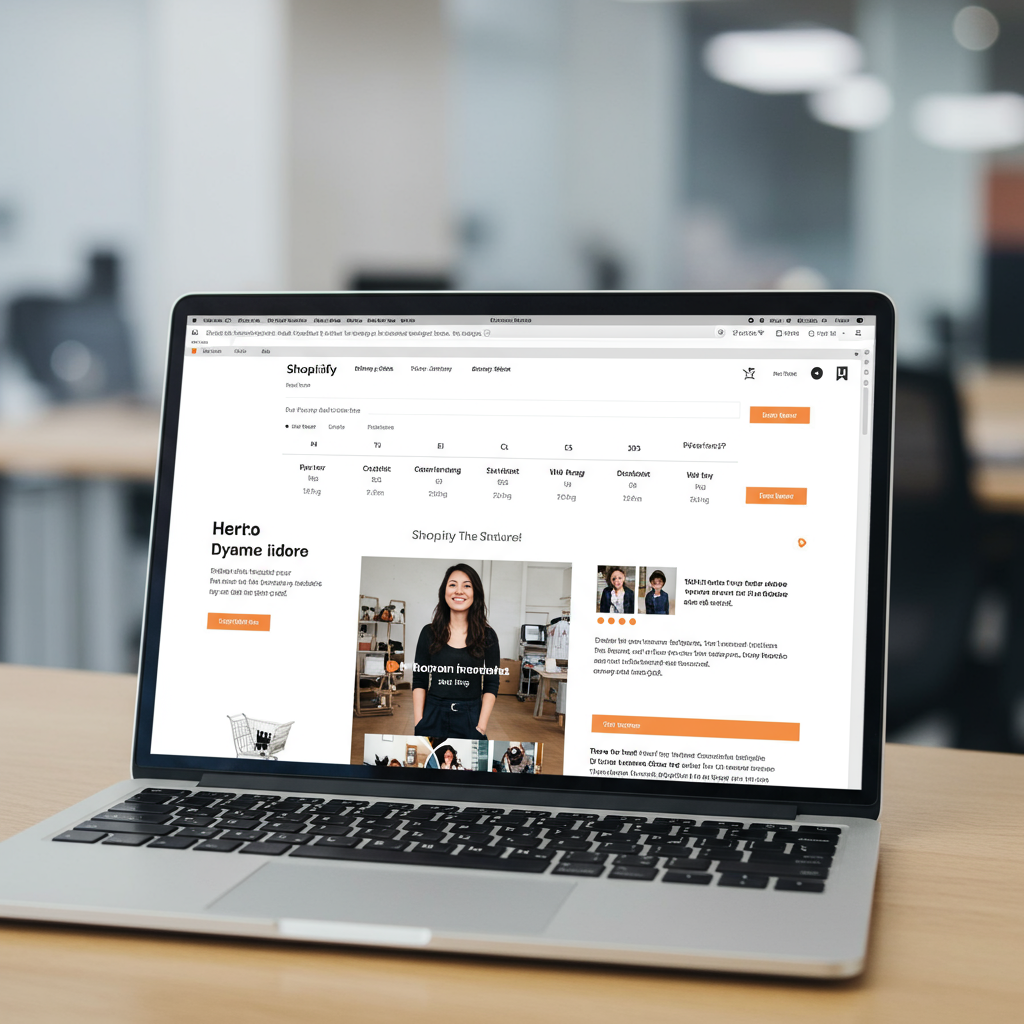Elevate your online store’s first impression and drive conversions with these forward-thinking design tips.
Hello fellow Shopify merchants! As we look ahead to 2025, the digital landscape continues to evolve at an incredible pace, presenting both challenges and exciting opportunities.
Your Shopify store’s homepage isn’t just a digital storefront; it’s the virtual front door to your brand, often the very first impression a potential customer gets.
In today’s competitive e-commerce world, a well-designed, optimized homepage is no longer a luxury—it’s an absolute necessity for converting visitors into loyal customers.
I’ve spent a lot of time analyzing emerging trends and best practices, and I want to share my insights on how you can elevate your Shopify homepage design for 2025.
Our ultimate goal here is to create a homepage that not only looks fantastic and reflects your brand identity but also performs exceptionally, driving engagement and, most importantly, sales.
First, let’s talk about the hero section. This is the prime real estate above the fold, and it needs to grab attention instantly and communicate your core message.
For 2025, consider dynamic, high-quality video backgrounds or interactive elements that showcase your products in action, creating an immediate immersive experience.
Your main headline should be clear, concise, and immediately communicate your unique selling proposition (USP). What problem do you solve? What makes you different from competitors?
Below the hero, intuitive navigation is paramount. Customers should be able to find what they’re looking for within a few clicks, ideally even fewer, to prevent frustration.
Think about implementing mega menus for larger inventories, using clear and descriptive category labels, and ensuring a prominent, easily accessible search bar.
Mobile navigation, in particular, needs to be equally seamless and user-friendly, as a significant portion of traffic will come from mobile devices.
Personalization is going to be huge in 2025, driven by advanced AI. Your homepage should dynamically adapt to returning visitors based on their browsing history or purchase behavior.
This could mean showcasing previously viewed products, recommending complementary items, or even tailoring promotional banners to their specific interests.
Integrate social proof prominently. Customer reviews, compelling testimonials, user-generated content (UGC), and trust badges build immense credibility and encourage purchases.
Don’t just list them; make them visually appealing and easy to digest. A rotating carousel of glowing reviews or a dedicated ‘Our Happy Customers’ section works wonders.
High-quality product imagery and video are non-negotiable. Invest in professional photography and consider incorporating 3D models or augmented reality (AR) previews where applicable.
These immersive experiences help bridge the gap between online browsing and physical interaction, significantly reducing buyer hesitation and increasing confidence.
Call-to-actions (CTAs) must be clear, compelling, and strategically placed throughout your homepage. Use action-oriented language like ‘Shop Now,’ ‘Discover More,’ or ‘Get Yours Today.’
Ensure your CTAs stand out visually through color and placement, guiding the customer effortlessly through their purchasing journey.
Page speed is more critical than ever. A slow-loading homepage will deter visitors faster than anything else, leading to high bounce rates and lost sales.
Optimize all images for web, minimize unnecessary code, and leverage Shopify’s built-in speed optimization features and third-party apps designed for performance.
Remember, search engines like Google prioritize fast-loading sites, directly impacting your search engine optimization (SEO) and organic visibility.
Speaking of SEO, ensure your homepage content includes relevant keywords naturally within your headlines, product descriptions, and any introductory text.
Your meta title and description for the homepage should be compelling and accurately reflect your brand, enticing users to click from search results.
Consider a dedicated section for new arrivals or best-sellers to highlight popular products and encourage impulse buys, keeping your offerings fresh and exciting.
Integrating your blog or a ‘latest news’ section can also be highly effective. It positions your brand as an authority in your niche and provides fresh, valuable content for SEO.
Think about accessibility. Your homepage should be usable by everyone, regardless of their abilities. This includes proper color contrast, keyboard navigation, and descriptive alt text for all images.
Sustainability and ethical practices are increasingly important to conscious consumers. If these are core to your brand, highlight them prominently on your homepage.
A small banner, a dedicated section explaining your commitment, or even a ‘Shop Sustainably’ category can resonate deeply with your target audience.
Finally, don’t set it and forget it. Your homepage should be a living, evolving entity. Regularly A/B test different elements, headlines, CTAs, and layouts.
Analyze your Shopify analytics to understand user behavior, identify pain points, and make data-driven decisions for continuous improvement and optimization.
By focusing on these key areas—dynamic visuals, personalization, social proof, speed, and continuous optimization—you’ll be well on your way to a Shopify homepage that truly shines in 2025.
I believe these tips will give you a strong foundation for success and help you create a homepage that not only attracts but also converts.
What do you think about this article? I’d love to hear your thoughts and any strategies you’re planning to implement for your own Shopify store!






